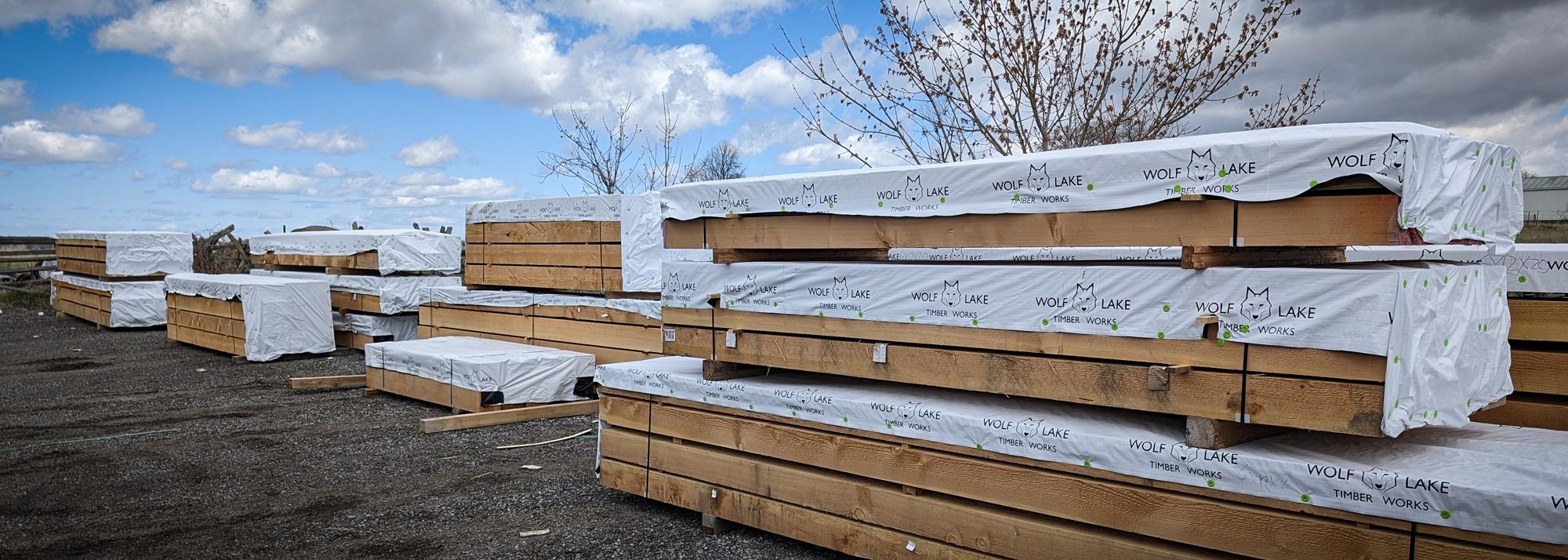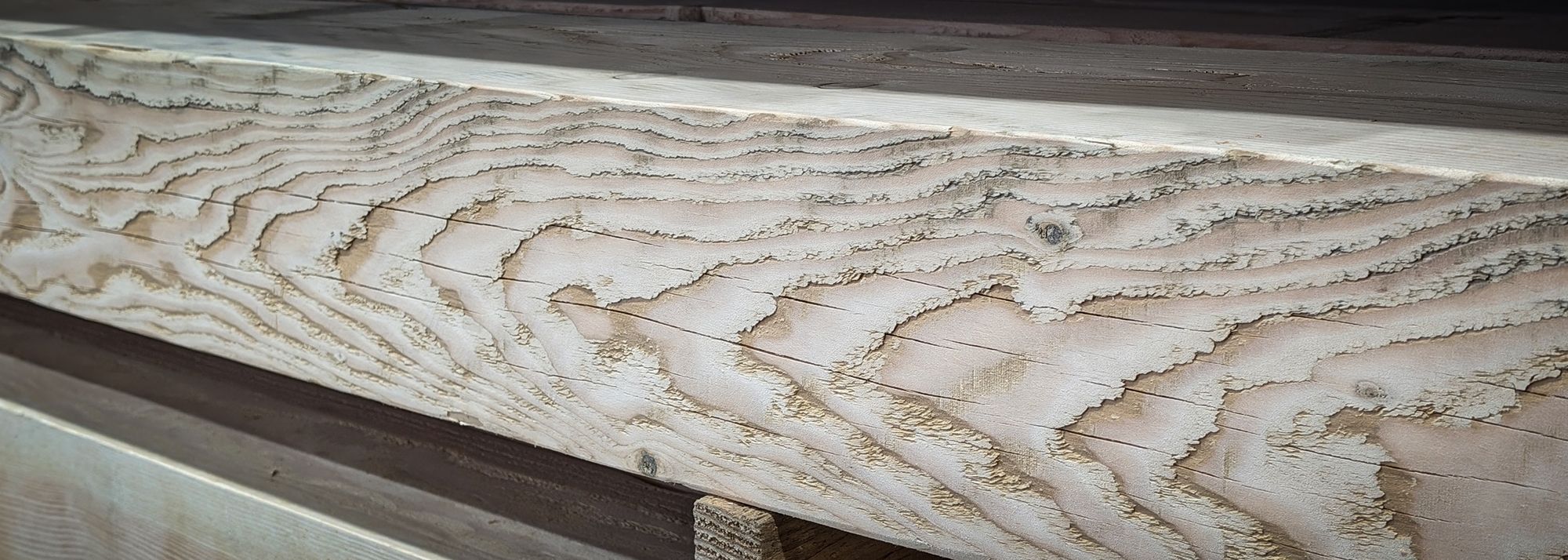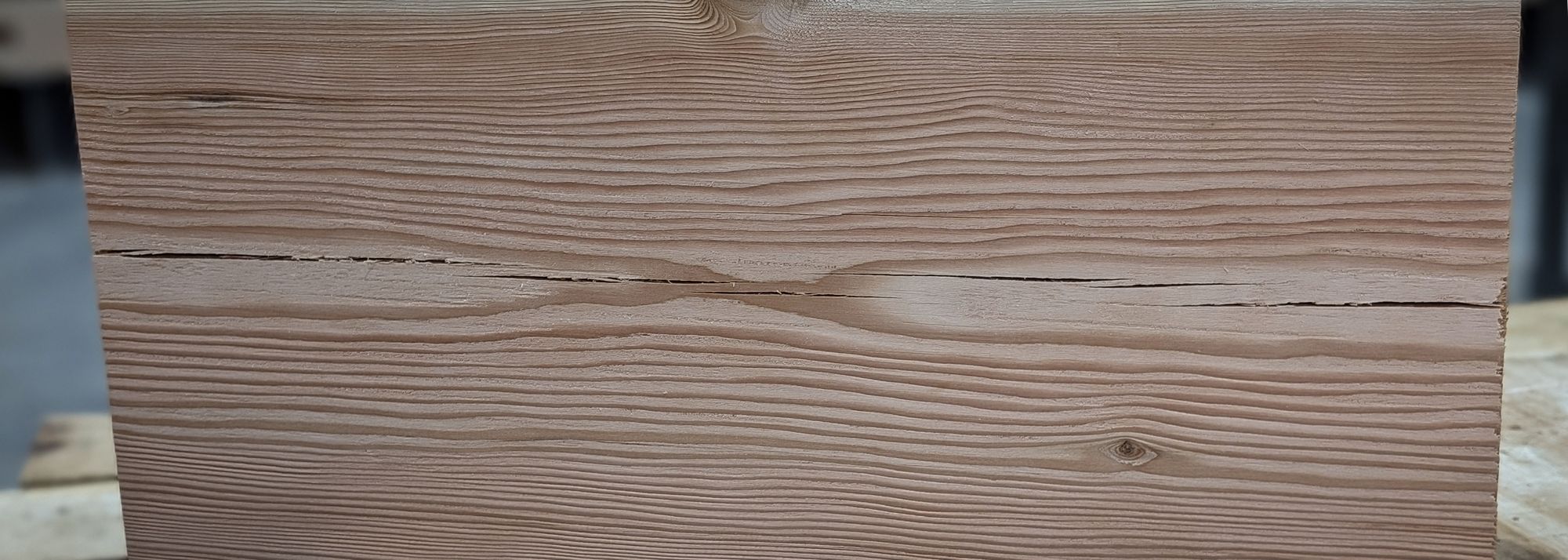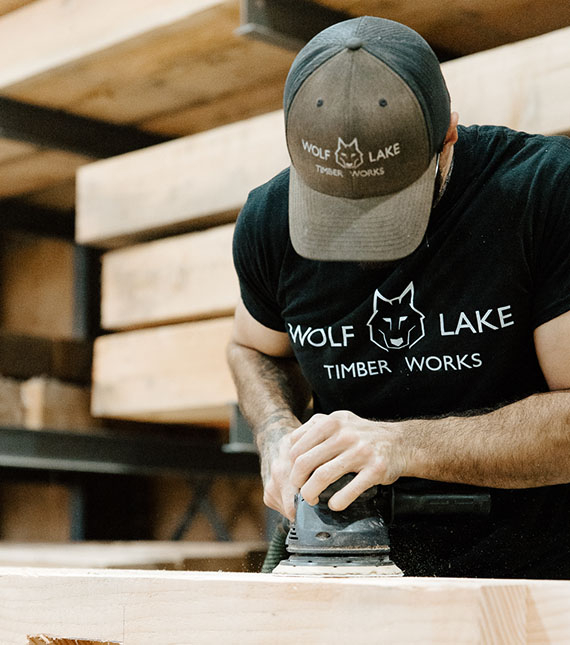 |
We collect basic website visitor information on this website and store it in cookies. We also utilize Google Analytics to track page view information to assist us in improving our website. |
CONTINUE |
 |

Each one of our timber frames is designed with a methodical attention to detail, and crafted with the same structurally graded materials. For our frames, we primarily use #1 grade, rough sawn, free of heart centre, Douglas fir timbers, and J-Grade 2x6 T&G roof decking.
Ultimately, our goal is to use the most premium products available to us, to ensure that our clients are happy with, and excited for, their structure for years to come.
Why Do We Choose Rough Sawn?
Rough sawn timbers (also known as full sawn) are sawn to the full timber size using a band saw, or circular saw. This means that an 8x8 rough sawn timber will have true 8” x 8” finished dimensions. It also means that the surface of the timber has more texture, with the grain being more pronounced, than a dressed - or planed - timber. The rougher surface allows for the timber to absorb more stain, which in turn produces a more rich colour, and a longer lasting finish.

These two traits have cemented our decision when it comes to what timbers we primarily use. Dressed timbers give off a more polished look once they’re stood. Through our experience, we have found that they have their place in the right project. However, we have seen that the dressed timbers don’t quite hold the stain’s pigment as long as the rough sawn timbers can, and with the extra material removed from its faces, they lose a touch of their rustic appeal in size alone.
What Projects Call for Dressed Timbers?
Dressed timbers can really be the correct choice in the right application due simply to their smooth appearance. The grain on dressed timbers has a nearly non-existent depth, this leaves behind the cottage country look and instead adopts a sleek, streamlined look, if that’s what you’re looking for in your project.

There are also functional aspects to using dressed timbers for a timber frame. The planed dimensions result in consistent timber sizing that matches up with dimensional lumber. Typically, this works out much better for interior timbers, and in projects where exact dimensions of the timbers themselves are critical.
Why 2x6 T&G Roof Decking?
For our backyard pavilion models, we typically provide or install a 2x6 J-Grade Douglas fir T&G roof decking. We choose to use 2x6 not only because it provides a beautiful ceiling finish below, but it is thick enough to install the roofing shingles directly to it, without the nails poking through the underside. Ultimately, this provides a nicer finish, at a more cost effective price, than using a 1x6 T&G, and incurring the additional cost of sheeting the roof with plywood.
J-Grade is one of the highest grades of dimensional lumber available. This means that it has been selected from material to ensure it is straighter, stronger and without defects when compared to other standard dimensional lumber. We choose to use Douglas fir so that we are not mixing wood species on any project. This ensures that grain patterns match, and that the stain on the timbers is absorbed in the same way.


